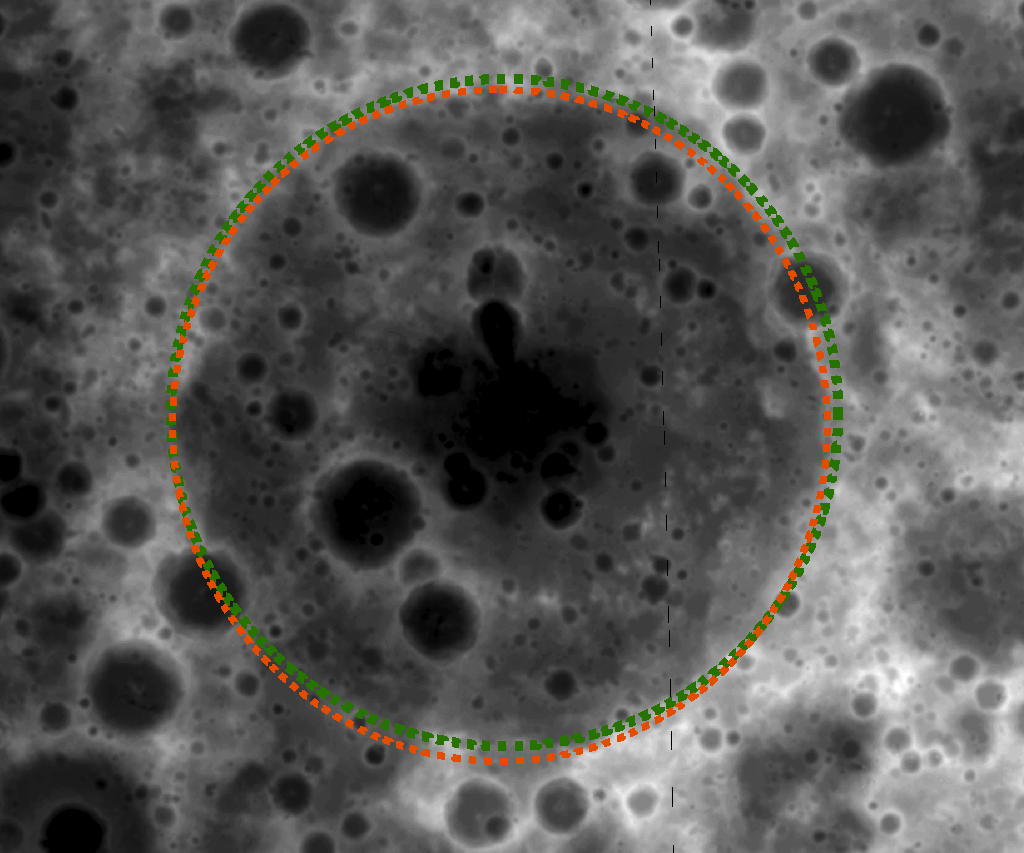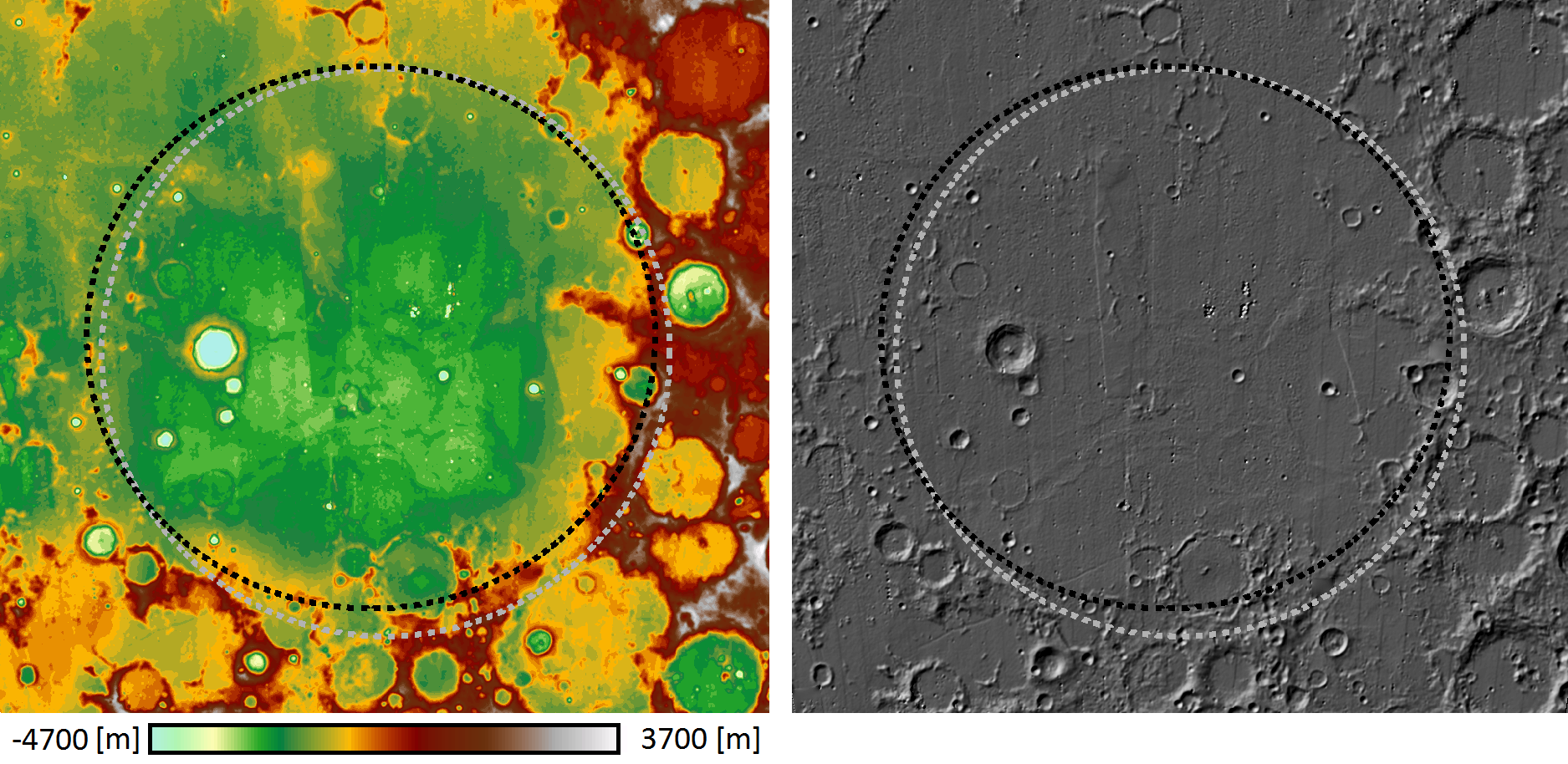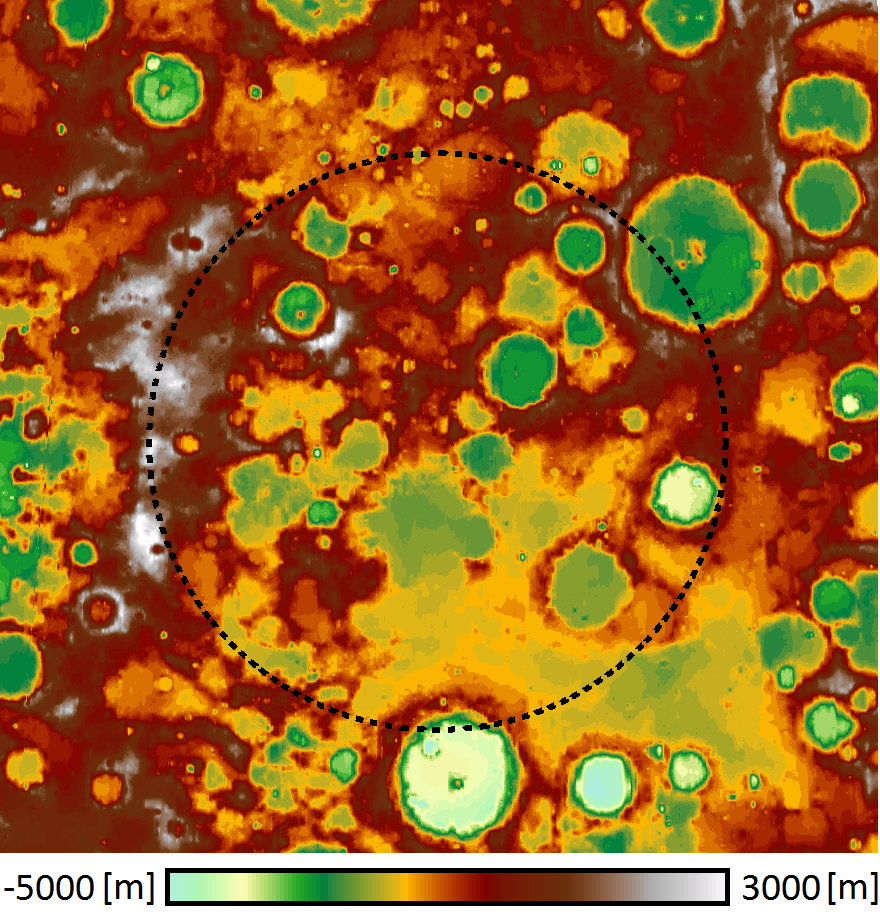
Large impact structures represent important time markers and clues to the early history of the Moon. Unfortunately, older basins may be highly degraded and are sometimes difficult to identify in images. Digital Terrain Models (DTMs) allow us to make more confident identifications of lunar basins and to study their morphologies. Large numbers of tentatively identified lunar impact basins, thoroughly listed in catalogs [1], are awaiting verification and detailed investigation of their ages.
Previous lunar topographic data sets used for studies of basins include the stereo model derived from Clementine images (5 km resolution). Currently, LRO's Lunar Orbiter Laser Altimeter (LOLA) is collecting a global topographic dataset. Due to LRO's polar orbit, the LOLA topographic products have high resolution (better than 40 m) at the poles and suffer from orbit gaps of about a kilometer in the equatorial areas. The DTM of the Nubium basin (below) was made from overlapping WAC images obtained in adjacent orbits. The topography has a uniform global spatial resolution of 500 m except at the poles where deep shadows results in area of no coverage. Using these new WAC topographic data, several degraded impact structures were positively confirmed (opening image and Fig. 2). However, at this time, other basins such as Marginis (Fig. 3) are not yet positively confirmed.
[1] Wood C.A. (2004): Impact Basin Database.
Published by Juergen Oberst on 9 June 2010

